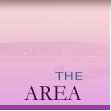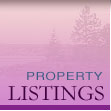
Unique Marketing Plan
Receptive to your needs
Positive Personality
Legendary Customer Service
Excellence & Ethics
Mortgage calculator: figure out what you can afford:
If you're thinking of buying a home or transferring or refinancing your existing mortgage, use these handy calculators to:
- Figure out how much you can afford to spend on a home.
- Determine what your mortgage payments will be.
- Compare different ways of paying your mortgage off faster.
- Add lump sum or top-up payments to your mortgage calculation.
- See your amortization schedule (which provides a breakdown of principal and interest payments for the life of the mortgage)
Mortgage Info
Qualifying for a mortgage
Your Royal LePage agent can arrange to have you pre-qualified for a mortgage before you start shopping for a home. It's easy, and you'll avoid possible disappointments down the road if you fall in love with a place, then find out you can't afford it. Plus, once you do find the perfect home, it will mean you can make an offer immediately.
Here's how mortgage approval works: the amount of money you qualify for, plus the amount of cash you can put down equals the amount you can afford to spend on a home. Most lending institutions won't allow more than about 30% of your income to support a mortgage. If you have other debts, they usually won't allow your debts and your mortgage to exceed 40% of your income.
Finalizing your mortgage
Once you've found the home you want to buy, you'll need to finalize your financing. You'll need to provide your lender with the following documents:
- A copy of the real estate listing of the property. If the home is still to be built, the mortgage lender will need to see the architect's or builder's plans and details on lot size and location.
- A copy of the offer to purchase or the building contract, if this document has been prepared.
- Documents to confirm employment, income and source of pre-approval.
- If you have a pre-approved mortgage, it's a simple matter of finalizing a few details with your mortgage specialist.
What is a pre-approved mortgage?
It's a written commitment from a lender that you will get a mortgage for a set amount at a set interest rate, locked in for 60-120 days, depending on the lender. The commitment is subject to a financial assessment and property appraisal. This service is always free and without obligation.
Why do it?
A pre-approved mortgage gives you an edge. Before you even start house hunting, you'll know how much you can afford, your interest rate, and your monthly payments. With your financing already mapped out, you can concentrate on finding the right home in your price range.
A pre-approved mortgage shows you're a serious buyer. In a situation where several people are bidding on the home you want, you may decide to offer the list price and beat out earlier offers.
To request a pre-approval, call 1-888-562-3284 or apply online.
Mortgage terms explained
Mystified by all the financial jargon used to describe mortgages? Here's a quick overview of key terms to help you understand the language - and make the process clearer and easier.
Mortgage. A personal loan used to purchase a property. You pledge the property being purchased as security for the loan.
Down payment. The portion of the purchase price that you pay initially as a lump sum; the rest is financed by your financial institution. A down payment is generally up to 25% of the purchase price.
Principal. The amount of your loan.
Interest. This is added to the amount you have borrowed to compensate the lender for the use of their money. Your mortgage is repaid in regular payments which are applied toward the principal and interest.
Term. The number of months or years the mortgage contract covers (typically six months to five years), during which you pay a specified interest rate.
Amortization. The number of years it will take to repay the mortgage in full. (This is usually longer than the term of the mortgage.) For instance, you may have a five-year term amortized over 25 years.
Equity. The difference between the value of your property and the amount you still owe on the mortgage.
Conventional mortgage. Offered to buyers who make a down payment of 25% or more of the appraised value or purchase price.
High ratio mortgage. Offered to buyers with a down payment of less than 25%. This type of loan must be insured against default by the federal government through the Canada Mortgage and Housing Corporation (CMHC) or an approved private insurer (the lender usually arranges this). The borrower pays a one-time insurance premium to the insurer (ranging from 0.5% to 3.75% depending on the size of the loan and value of the home; additional charges may also apply). The premium is usually added to the principal amount of the mortgage. If you default on your mortgage, the lender is paid by the insurer.
Fixed rate mortgage. Carries a set interest rate for a specific period of time (the term of the mortgage). The regular payment of the principal and interest remains the same throughout the term. The benefit of choosing this option is that you are protected if interest rates rise.
Open mortgage. Gives you the flexibility to make unlimited pre-payments or lock into a fixed term at any time. This loan's interest rate changes periodically, and is tied to the prime rate. This type of mortgage is popular when interest rates are expected to fall or remain stable.
Portability. If you are selling your home and buying another, this option allows you to take your mortgage - with the same term, rate and amount - and apply it to your new house. If your mortgage isn't portable, don't sign for a longer term than you're likely to stay in the house or you could wind up paying a penalty to break the mortgage agreement.
Assumability. This feature allows the buyer of your house to take over or "assume" your mortgage. If your mortgage has a fixed interest rate lower than current rates, it could be an attractive selling feature.


